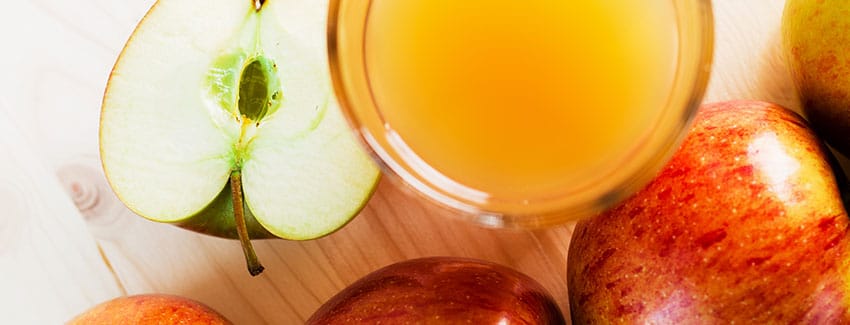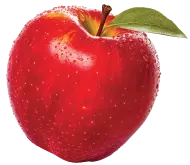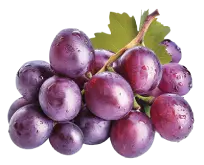
Four 55 gallon drums of Apple Juice Concentrate (AJC) Type 1 (Tree Top Item 4000741000, Lot 18134091001, produced 5/14/2018) were subjected to ambient temperature over a period of six weeks during the months of June and July. The drums were placed on a pallet outside the Technical Center on our Selah Campus and left undisturbed for the study until samples were pulled.
Temperature was recorded every 15 minutes with an Alpha Mach iButton Type L probe.
Temperature was measured internally at the center of the drum and externally between the product bag and the drum liner.
A drum was opened and a sample was taken at the start of the study (Day 0), then every two weeks a new drum was opened and a sample was pulled. Samples were analyzed against the major attributes in Tree Top’s specification including:
- brix,
- color,
- haze,
- turbidity,
- microbiological levels.
Brix was measured with a Bellingham & Stanley RFM81 refractometer. Color and haze was measured as single strength juice at 11.7 °Brix with a Hach DR/4000 spectrophotometer at 430nm (color) and 625nm (haze). Turbidity was measured as single strength juice with a Hach 2100N turbidimeter. Microbial determination was completed by Ceres Laboratory, an ISO/IEC 17025:2005 accredited analytical laboratory. The methods used for microbial determination are summarized in Table 2. In addition, samples were tested from the drum opened on Day 0 at every time point to determine if a broken seal would affect the microbial levels.
Table 1. Dates samples were pulled and corresponding container number.

Figure 1. Temperature variation over the 6 week study. Temperature was measured at the center of the drum (blue) and between the product bag and the drum liner (grey).
The concentrate experienced temperature fluctuations from 73°F to 94°F internally, and 73°F to 101°F externally. On average, the temperature was 84°F internally, 86°F externally.
Brix measured from the drum opened at time point remained constant around 70°.

Figure 2. Color of the drums opened at each time point as percent transmittance at 430nm tested as single strength juice. Tree Top specification for color is depicted with the light/dark blue lines.
Color, expressed as percentage transmittance, decreased over time with a correlation value of 0.9939. The percentage transmittance was out of Tree Top specification when tested at 4 weeks.

Figure 3. Haze of the drums opened at each time point as percent transmittance at 625nm tested as single strength juice. Tree Top specification for haze is depicted with dark/light blue lines.
Haze, expressed as percentage transmittance, decreased over time with a correlation value of 0.9818. At 6 weeks, the percentage transmittance was just out of Tree Top specification at 89.91%T.

Figure 4. Turbidity of the drums opened at each time point as NTU tested as single strength juice. Tree Top specification for turbidity is depicted with the dark blue lines.
Turbidity, expressed as Nephelometric Turbidity Units (NTU), increased over time with a correlation value of 0.9402. At 4 weeks, the turbidity was out of Tree Top specification.
Table 2. Tree Top’s AJC microbial specification and test methods. *Tests are not ISO/IEC 17025:2005 accredited.

Summary
Over the six week study, color of the apple juice concentrate significantly darkened and haze and turbidity increased. Overall, the temperature difference from internal to external in the product did not vary significantly and on average the ambient temperature was 84°F-86°F. Color and turbidity were greatly affected by the ambient temperatures.
Between 2 to 4 weeks of ambient temperatures, the concentrate color darkened and turbidity increased outside of the specified range set by Tree Top. Haze was less affected by the temperature. After 6 weeks of ambient temperatures, haze increased and fell just outside of the range set by Tree Top. A sample from the drum opened on Day 42 was made into single strength juice (11.7 °Brix) and evaluated by Tree Top’s trained sensory team. The sample was tasted against an apple juice concentrate reference sample and scored moderately caramelized/cooked apple flavor. Additional feedback included a darker color in the shelf life sample juice compared to the reference.
Subjecting the apple juice concentrate to ambient temperatures did not affect brix or microbial growth. Brix remained constant throughout the study at 70°. No detectable microbial growth was observed during the six week period in the drums opened at each time point. In addition, no detectable microbial growth was observed in the drum opened on Day 0 at each time point indicating that the broken seal did not affect microbial levels.
The study showed that the limiting factor of the apple juice concentrate shelf life at ambient temperatures is the color and turbidity. The linear regression for color indicates that by Day 17, just under 2.5 weeks, the color would no longer meet Tree Top specification. The linear regression for turbidity suggests that by Day 21, 3 weeks, the turbidity of the concentrate would no longer meet Tree Top specification. While haze did increase during the six week study, the impact over time was not as significant. By Day 42, the haze of the concentrate no longer met Tree Top specification and the linear regression indicates by Day 44 the concentrate would fall outside Tree Top specification. To ensure that the apple juice concentrate stays within the specification set by Tree Top, it is recommended that apple juice concentrate drums remain in refrigerated storage (<45°) for 547 days (1.5 years). However, if refrigerated storage is not available, it is recommended apple juice concentrate drums of similar specification could be stored at the ambient temperatures experienced in the study no longer than 2 weeks.
Tree Top produces a wide range of fruit juice concentrates. To learn more about our product offerings, explore our products section. If you’d like more information about how the Tree Top R&D team can help you with development and research, contact our fruit ingredient experts at (800) 367-6571 ext. 1435.
If you’d like to try a sample, you can do that on our website. Go to Sample Request.




